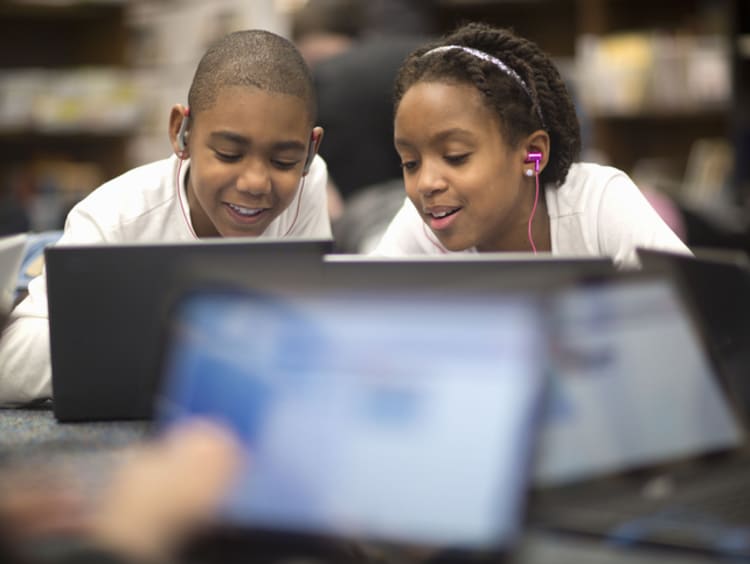Teaching Tuesday: Hot New Technology in Education

K-12 schools and educators had to quickly pivot and develop more resources for an online environment in the last year. Educators are regularly encouraged to increase their technology skills, integrate digital curriculum and add interactive games into learning. Remote and hybrid learning shaped instructional methods and curriculum design. This year hybrid teaching is becoming the norm and asynchronous methods of communication are paramount.
Implementing Technology
While several schools in the past five years have implemented a computer for every student, there were still many that had to quickly alter their technology solutions last year. Students and teachers had to learn to use new devices and technology to succeed in a hybrid or online environment. Educators adapted to a more personalized pace of instruction that required new tools and new training to support online learning. The changes that happened in the last year were real and significantly shaped the landscape for the future of education.
Embracing Technology
K-12 educators are ready to embrace the use of technology in the K-12 classroom. The abilities of educators to use and see the value of technology has improved overall according to an Education Week Special Report.1
Moving forward, even with new-found technology confidence, it is still sage advice to keep it simple and effective. The best applications of technology are the ones that specifically support the intended learning outcomes and allow students to demonstrate understanding of the content in innovative ways. When implementing new technology in the classroom, it is important that educators work with the IT department to understand the privacy and safety terms of any application being implemented in the curriculum.
Technology in Education
Teachers can categorize frequently used technology into assessment tools, brainstorming tools, instructional tools and collaboration tools.
Assessment Examples:
- Gimkit – a live game-show platform
- GoFormative – teachers can create digital formative assessments
- Flipgrid – video sharing platform
Brainstorming Example:
- JamBoard – sketch ideas in whiteboard-style
Instructional Examples:
- EdPuzzle – build interactive video lessons
- Nearpod – interactive tools
- Whiteboard.chat – digital notebook to engage students
Collaboration Examples:
- Google Drive – shared cloud space for documents and presentations
- Wakelet – organizing websites
Guest Speaker Panels
Free virtual tools can complement online or in-person teaching and learning. The National Security Agency (NSA) has created The K-12 Speakers Bureau for engaging and interactive talks on STEM fields.2
Educators are constantly challenged with new situations and new opportunities. They are shaping the next generation to become more cyber aware and cyber safe. Technology is a supportive tool that helps make learning fun, engaging and interactive.
About the Authors
The editors of the College of Education’s Teaching in Purple are thrilled to have Drs. Rowland and Harris serve as this week’s #TeachingTuesday guest bloggers. Dr. Pam Rowland is the associate dean of Computer Sciences and Technology (CSET) in the College of Science, Engineering and Technology at GCU. Her area of teaching includes cybersecurity and computer science. Pam’s research interest focuses on the social inclusion and growth of females in cybersecurity. Her core value is to honor God through serving, mentoring and forming relationships. Dr. Brandy Harris is the assistant dean and an assistant professor of CSET at GCU. Dr. Harris’ focus on inclusive education motivates her research interests of increasing underrepresented populations in STEM fields and supporting neurodivergent students in technology based programs.
Want more? Check out all of the articles from Teaching Tuesday and return each week for a new post. Learn more about Grand Canyon University’s College of Education and our degree programs and join in our efforts to elevate the education profession.
1 Education Week, The Future Classroom: What Will It Look Like and How Will It Be Different? In August 2021
2 National Security Agency Center Security Service, Request STEM and Foreign Language Services for Your K-12 Classroom in August 2021
The views and opinions expressed in this article are those of the author’s and do not necessarily reflect the official policy or position of Grand Canyon University. Any sources cited were accurate as of the publish date.


